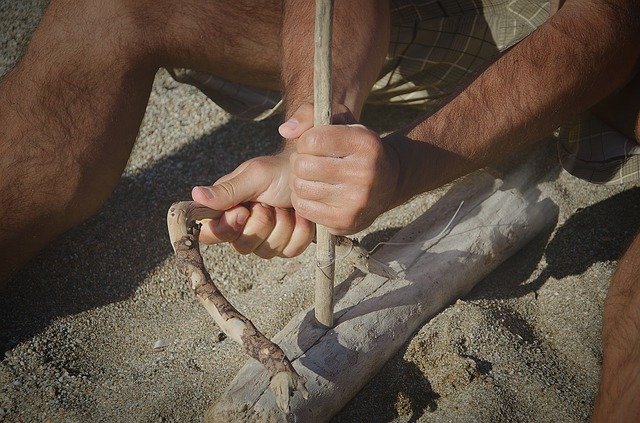Neanderthals are known to have used tools but how far they were able to use them to exploit coastal resources or under the seas -- remained a question that a study at the archaeological cave site of Grotta dei Moscerini in Italy tried to answer.
The site is one of two Neanderthal sites in the country with an abundance of hand-modified clam shells, dating back to around 100,000 years ago. Neanderthals collected clam shells and volcanic rock from the beach and coastal waters of Italy during the Middle Paleolithic, said the study published in the open-access journal PLOS ONE.
Researcher Paola Villa of the University of Colorado and her team examined 171 modified shells, most of which had be retouched to be used as scrapers and all these belonged to the Mediterranean smooth clam species Callista chione.

Based on the state of preservation of the shells, shell damage and encrustation by marine organisms, the authors inferred that nearly a quarter of the shells had been collected underwater from the sea floor, as live animals, as opposed to being washed up on the beach. In the same cave sediments, the authors also found abundant pumice stones likely used as abrading tools, which apparently drifted via sea currents from erupting volcanoes in the Gulf of Naples (70km south) onto the Moscerini beach, where they were collected by Neanderthals.
Cave full of Neanderthal collections
The cave opens on a beach and has a large assemblage of 171 tools made on shells collected on the beach or gathered directly from the sea floor as live animals by skin diving Neanderthals, indicating that skin diving for shells was a common activity of them, said the study published by E. Trinkaus.
These findings reiterate earlier findings to show evidence that Neanderthals in Western Europe aware of diving into coastal waters to collect resources long before Homo sapiens practised these habits. Neanderthals also collected pumices erupted from volcanoes in the gulf of Naples and transported by sea to the beach.
Did Neanderthals wear swimsuits?
Probably not but certainly some of these ancient humans might have spent a lot of time at the beach and have dived into the cool waters of the Mediterranean Sea to gather clam shells. It was in 1949 that a team of archaeologists found the site Grotta dei Moscerini, sits just 10 feet above a beach in what is today, the Latium region of central Italy.

Villa, an adjoint curator in the CU Museum of Natural History, said the results show that Neanderthals may have had a much closer connection to the sea than many scientists thought. "The fact they were exploiting marine resources was something that was known," Villa said. "But until recently, no one really paid much attention to it."
Cave discoveries
When Villa and her colleagues took a closer look at those tools, they found something they weren't expecting. Nearly three-quarters of the Moscerini shell tools had opaque and slightly abraded exteriors, as if they had been sanded down over time. That's what you'd expect to see, Villa said, on shells that had washed up on a sandy beach. The rest of the shells had a shiny, smooth exterior.
Those shells, which also tended to be a little bit bigger, had to have been plucked directly from the seafloor as live animals. "It's quite possible that the Neanderthals were collecting shells as far down as 2 to 4 meters," Villa said. "Of course, they did not have scuba equipment."









